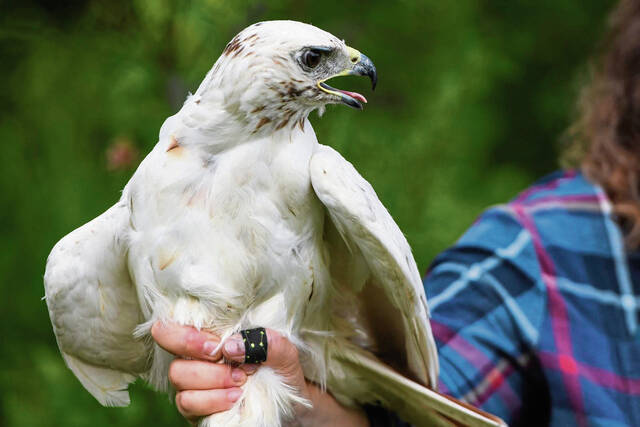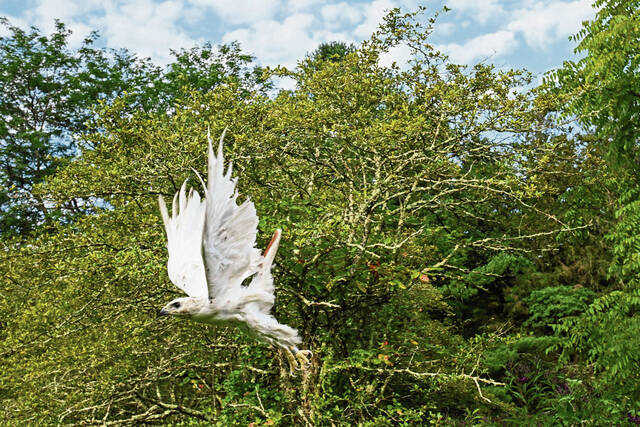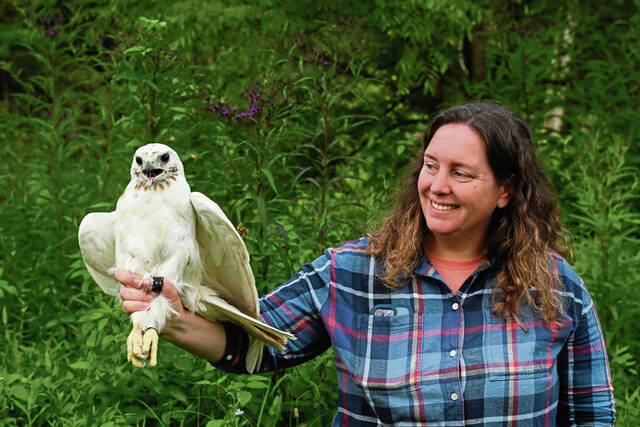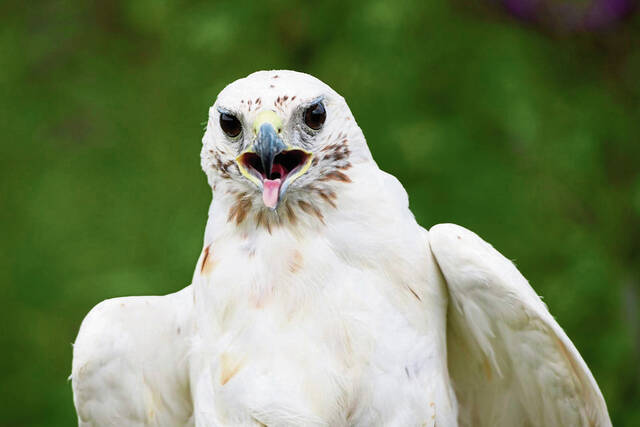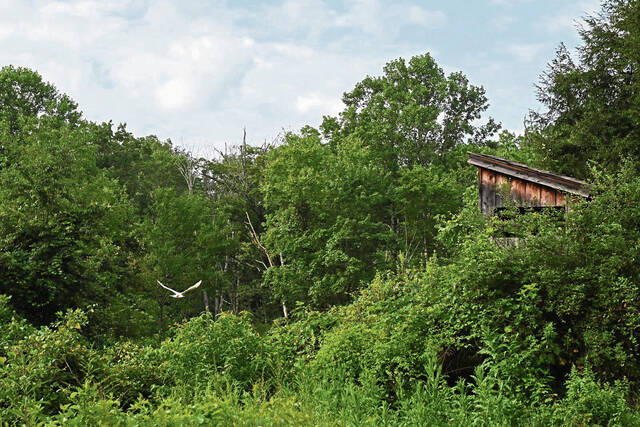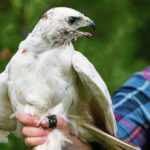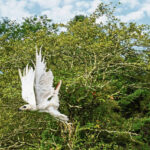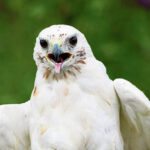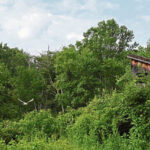The red-tailed hawk didn’t hesitate at all — with a “one, two, three,” the bird spread its wings Tuesday morning in Cook, showing no sign of the trauma it sustained 11 days ago after apparently being hit by a vehicle.
And while it acted like a typical hawk and took off to a wooded area upon being released from rehabilitation, it didn’t look like one.
The bird, believed to be a female because of its size, is a rarity. Rehabilitators and researchers said it has leucism, a genetic condition resulting in reduced pigmentation. In some wildlife, that can mean splotches of white on their bodies, or maybe just small, hardly noticeable spots.
But the hawk released Tuesday had almost entirely white plumage, except for some small spots of brown around its face and on its chest. Red-tailed hawks typically have black or brown feathers mixed with white and, of course, the trademark reddish-brown tail, all of which help the raptors blend in to a wooded environment.
“This is the first time I’ve seen one that has hardly any markings whatsoever,” said Aislinn Morris, senior staff member at Wildlife Works rehabilitation center in Youngwood.
So it’s impressive that the bird, estimated to be 3 years old, has been able to survive in the woods of Westmoreland County.
“She’s vulnerable to anything that sees her,” Morris said.
The bird was certainly vulnerable July 25 when it was found soaking wet on a rural road, apparently stunned after possibly being hit by a vehicle. Workers at Powdermill Nature Reserve got wind of the situation, and bird banding program manager Annie Lindsay scooped the hawk, unable to fly, out of brush on the side of the road.
The hawk was taken to Wildlife Works. It took the bird a couple of days to start acting normal, Morris said. Bigger birds, such as raptors, that get hit by vehicles typically have a mild concussion, she said.
It was monitored for any other neurological symptoms over the next several days while being fed a diet of thawed frozen mice. The hawk’s flying ability wasn’t affected.
Before Tuesday’s release, Lindsay banded the bird and took other measurements. It weighed 1,250 grams — about 2.8 pounds.
“I’m excited to know this particular bird, just because it’s so well-known, was treated and releasable,” Lindsay said. “We’re very grateful for what they do at Wildlife Works.”
The hawk has been seen over the past few years during regular bird counts by Powdermill staff, she said. It was looking much better Tuesday than when Lindsay last saw it injured on the side of the road.
She tightly gripped the bird’s legs and walked to the release point, posing for a few photos before setting it free. The bird was a stark contrast against the vibrant green leaves of the Laurel Highlands before it went out of sight. After a few minutes, it was spotted again, perched on a bare branch looking toward the group that helped it get there.
“It’s a big deal that she gets to go back,” Morris said. “If somebody wouldn’t have found her, she could’ve easily been hit by another car or something could (have dragged) her off.”


